-
130-year old seawall protected New Jersey town from Sandy's storm surges
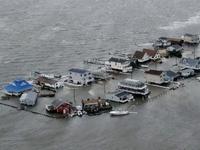
Bay Head and Mantoloking sit side-by-side in Ocean County, facing the ocean. In Bay Head, Sandy flooded 88 percent of the oceanfront homes, with just one oceanfront home destroyed. In Mantoloking, more than half of the oceanfront homes were damaged or destroyed. The reason for the difference between minor structural impacts and widespread destruction: a relatively small coastal obstacle — a forgotten, 1,260-meter seawall, built in 1882 and buried beneath the beach – which reduced potential wave loads by a factor of two.
-
-
Dealing with man-made earthquakes
Between 1967 and 2000, central and eastern United States experienced on average 20 earthquakes above a magnitude 3.0 a year. Between 2010 and 2012, the number of earthquakes above a magnitude 3.0 in these regions has dramatically increased to an average of 100 a year. This increase in earthquakes prompts two important questions: Are they natural, or man-made? And what should be done in the future as we address the causes and consequences of these events to reduce associated risks?
-
-
Mother Nature offers best protection for coastal communities’ infrastructure
Extreme weather, sea-level rise, and degraded coastal ecosystems are placing people and property at greater risk of damage from coastal hazards. The likelihood and magnitude of losses can be reduced by intact ecosystems near vulnerable coastal communities. Scientists say that natural habitats such as dunes and reefs are critical to protecting millions of U.S. residents and billions of dollars in property from coastal storms.
-
-
Training volcano scientists saves lives
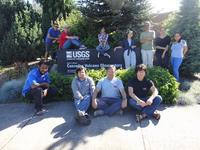
Scientists and technicians who work at volcano observatories in nine countries are visiting Mount St. Helens and the U.S. Geological Survey Volcano Science Center’s Cascades Volcano Observatory this week to learn techniques for monitoring active volcanoes. The International Training Program in Volcano Hazards Monitoring is designed to assist other nations in attaining self-sufficiency in monitoring volcanoes and reducing the risks from eruptions.
-
-
Houston, Texas boasts world’s best lightning detection system
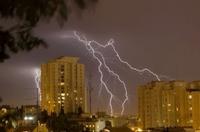
With thousands of strikes each year, Houston is the lightning center of Texas and one of the world’s most lightning-prone areas. Studies show about 1,800 thunderstorms pound the Earth at any given moment, resulting in about fifty lightning strikes every second. The country’s best system to detect lightning strikes — located in and around the Houston area — just got better, thanks to a complete overhaul and new software.
-
-
Climate change, severe weather threaten U.S. energy sector: Dept. of Energy
The U.S. entire energy system is vulnerable to increasingly severe and costly weather events driven by climate change, according to a U.S. Department of Energy report published last week. These climate and weather trends — increasing temperatures, decreasing water availability, more intense storm events, and sea level rise — each independently, and in some cases in combination, could restrict the supply of secure, sustainable, and affordable energy critical to U.S. economic growth.
-
-
U.S. Emergency Alerting System (EAS) vulnerable to hacking
The U.S. Emergency Alerting System (EAS) is designed to allow for quick alerts during an emergency. Researchers uncovered vulnerabilities in the digital alerting systems, vulnerabilities which allow an attacker remotely to log in over the Internet and manipulate any system function. The attacker could disrupt a TV or radio station’s ability to transmit and could disseminate false emergency information.
-
-
Using crowdsourcing for earthquake monitoring
The U.S. Geological Survey (USGS) and other scientific institutions are using social media and crowdsourcing to learn more about earthquakes, according to a new report. These techniques provide inexpensive and rapid data to augment and extend the capabilities provided by traditional monitoring techniques.
-
-
Assessing the social, economic effects of Deepwater Horizon spill
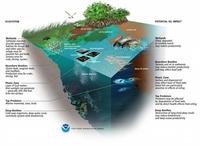
Numerous studies are under way to determine the impacts of the Deepwater Horizon oil spill on the Gulf of Mexico, but the extent and severity of these impacts and the value of the resulting losses cannot fully be measured without considering the goods and services provided by the Gulf, says a new report from the National Research Council (NRC). The report offers an approach that could establish a more comprehensive understanding of the impacts and help inform options for restoration activities.
-
-
Advancements in technology making it easier to fight wildfires
Following the Arizona wildfire disaster, many have been suggesting that new regulations are needed to control the spread of wildfires. Experts say that advancements in technology may well offer a more effective approach to saving lives and making it easier for firefighters to control wild blazes.
-
-
Wildfires contribute more to global warming than previously thought
Wildfires produce a witch’s brew of carbon-containing particles. A range of fine carbonaceous particles rising high into the air significantly degrade air quality, damaging human and wildlife health, and interacting with sunlight to affect climate.
-
-
Firefighting experts calling for easing environmental restrictions on prescribed burns
In the aftermath of the Arizona wildfire which killed nineteen firefighters in Yarnell, Arizona, there are growing calls for easing environmental restrictions which currently limit brush clearing and prescribed burns. It typically costs $5 per acre to conduct a prescribed burn in the wilderness, and about $50 per acre near residential areas. Thinning an area with chain saws and other equipment can cost around $500 per acre. These figures are small when compared to the $1,200 per acre cost of fighting the wildfire in Arizona.
-
-
Improving the reliability, resiliency of post-Sandy N.J. electric grid
According to NOAA, prolonged electrical outages, largely because of storms, have been steadily increasing in frequency since 1995. Sandia Lab will help East Coast communities devastated by Hurricane Sandy boost the resiliency of their electric grids, so they can be better prepared to deal with natural disasters in the future.
-
-
Gauging how residents in storm-prone regions react in the event of an imminent storm
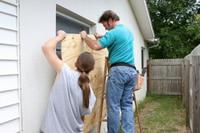
StormView software program gauges how residents of hurricane-prone regions react to warnings and prepare for storms. The program is designed to be as realistic as possible in order accurately to assess how people would react in the event of an imminent storm.
-
-
Earthquake-proofing precast buildings
Precast or ready-made building structures offer a number of advantages when compared to more traditional construction techniques in terms of time and cost savings. The vulnerability of joints and connections between assembled precast elements, however, is widely recognized as a potential safety issue, especially in earthquake-prone areas. An EU-funded project has set out to develop new procedures and guidelines for designing precast structure joints and connections that can stand up to seismic forces.
-
More headlines
The long view
The Surprising Reasons Floods and Other Disasters Are Deadlier at Night
It’s not just that it’s dark and people are asleep. Urban sprawl, confirmation bias, and other factors can play a role.
Why Flash Flood Warnings Will Continue to Go Unheeded
Experts say local education and community support are key to conveying risk.
